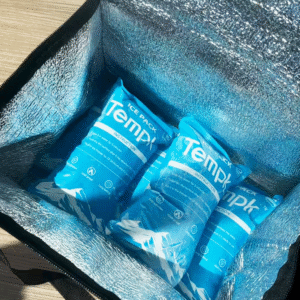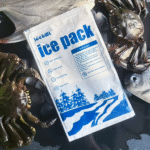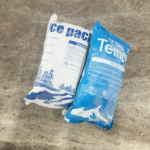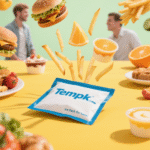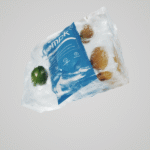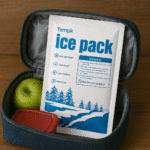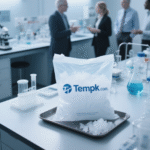¿Pueden los paquetes de gel de hielo permanecer frío? 48 Hrs como hielo seco?
Sí-Paquetes de gel de hielo permanezca frío 48 Hrs como hielo seco when you match PCM setpoint, aislamiento, and packout to your lane and validate with an ISTA‑style 48‑hour thermal test. Design frozen routes to ≤0 °F (−18 ° C), choose −20/−23 °C PCM for “frozen‑class,” and use thicker EPS/PUR or VIP to stretch hold time. Then prove it with a data logger before scaling.
-
When do ice gel packs stay cold 48 Hrs como hielo seco? (conditions, límites, profiles)
-
Which PCM and insulation really hit 48 horas? (−23 °C PCM, EPS, PUR y VIP)
-
How many gel packs do you need for 48 horas? (quick calculator and examples)
-
Gel packs vs dry ice—what should you choose? (seguridad, normas, costo, use cases)
-
2025 trends that make 48 hours easier (VIP mainstream, prequalified kits, greener PCMs)
Cuando hacer Paquetes de gel de hielo permanezca frío 48 Hrs como hielo seco?
Respuesta corta: Ice gel packs stay cold 48 Hrs como hielo seco under a defined ambient profile (p.ej., ISTA 7D) when you use the correct PCM setpoint (p.ej., −23 °C for frozen), adequate insulation, and a top‑heavy, low‑void packout. Validate with a 48‑hour test and a logger.
Por que esto funciona: Gel packs release “cold” at their phase‑change temperature. Water‑based gels (~ 0 ° C) suit chilled lanes; engineered PCMs at −20/−23 °C serve frozen lanes. If the setpoint is too warm—or insulation too thin—your reserve vanishes early. Use 2.0″ EPS/PUR for 36–48 h, or VIP hybrids for 48–120 h. For frozen food or ice cream, aim for ≤0 °F (−18 ° C) throughout.
Which PCM + insulation deliver 48 horas?
Detalles: For frozen‑class payloads, pair −23 °C PCM with 2.0″ EPS or PUR for ~48 h under moderate profiles; move to VIP panels to extend beyond 48 h or shrink box size. Para enfriar (2–8 ° C), +5 °C PCM bottles/gels plus VIP routinely achieve 48–120 h. Always request the thermal report (probe map, carga útil, ambient curve).
| Packout Choice | Typical Wall | Target Lane | Tu comida para llevar |
|---|---|---|---|
| −23 °C PCM + EPS | 1.75–2.0 ″ | Frozen ≤−18 °C | Practical 36–48 h in most seasons |
| −23 °C PCM + Puro | 2.0″ | Frozen ≤−18 °C | More margin for hot routes |
| +5 ° C PCM + personaje | Slim | 2–8 ° C | 48–120 h with smallest footprint |
Consejos prácticos que puede aplicar hoy
-
Pre‑condition PCM fully (p.ej., ≤−23 °C for −23 °C packs) por 24–48h.
-
Pre -chill el remitente so cold isn’t “spent” cooling foam.
-
Top‑load most PCM: fregaderos fríos; place thicker blocks above.
-
Eliminar huecos with kraft/foam to slow convection.
Ejemplo de campo: A dessert brand replaced 18 lb dry ice with −23 °C PCM in a 2.0″ EPS shipper and passed a 48‑hour summer profile with ≤2.8 °C variance across 6 probes—while avoiding dry‑ice airline issues.
How many gel packs for 48 hours so Paquetes de gel de hielo permanezca frío 48 Hrs como hielo seco?
Respuesta: Start frozen lanes with PCM mass ≈ 0.8–1.2× payload mass in EPS and adjust for ambient and access. Use VIP to cut PCM mass or extend time. Always qualify on your route with a logger.
Calculadora de copias (Sheets/Excel):
-
Base_lb_per_day (congelado): 10 para EPS, 8 for PUR, 6 para VIP
-
Ambient_Factor: 1.0 Frío / 1.2 cálido / 1.4 caliente
-
Insulation_Factor: 1.0 personaje / 1.1 Puro / 1.3 thin EPS
-
Access_Factor: 1.0 no‑opens / 1.2 luz / 1.4 frequent
Ejemplo resuelto: 48 H, warm route, EPS, light access →=ROUNDUP((48/24)*10*1.2*1.3*1.2,0) = 38 lb of −23 °C PCM (distributed base/sides/top).
Packout layout that actually works
Paso: Base PCM sheet → tight payload → side PCM/void fill → thick top PCM; bias more PCM to the “hot” exposure side (p.ej., top/last mile). Caídas frías; top‑heavy builds endurance.
| Layering Plan | Que usar | Grosor típico | What It Does for You |
|---|---|---|---|
| Base spread | Thin PCM sheet | 0.5–1″ | Evens temperature at the floor |
| Side fill | Small PCM/void fill | 0.5–1″ | Guards hot walls |
| Top cap | Thick PCM blocks | 1–2″ | Extends longest hold time |
Consejos prácticos & advice
-
Carriles de verano: Add 15–25% PCM or upgrade to PUR/VIP.
-
Openings cost time: One open can burn 1–3 h of margin—design for minimal access.
-
Document SOPs: Photos + weights = repeatability and fewer claims.
Gel packs vs dry ice—can Paquetes de gel de hielo permanezca frío 48 Hrs como hielo seco for everything?
It depends. Ice gel packs stay cold 48 Hrs como hielo seco for frozen‑class goods when you use −23 °C PCM and strong insulation; dry ice still wins for deep‑frozen (≤−60 °C) or very long lanes. Dry ice sits at −78.5 °C and is regulated for air transport; many PCMs are not dangerous goods (check the SDS).
Normas, seguridad, and what they mean for you
-
Air limits: Most airlines cap dry ice near 2.5 kg (5.5 lb) per passenger/package; venting and marks required. PCMs typically bypass hazmat labeling.
-
Product needs: Usar +5 ° C PCM for 2–8 °C meds; −23 °C PCM para alimentos congelados; usar hielo seco for ≤−60 °C or 72–120 h lanes.
-
Evidence, not anecdotes: “48 h” should map to ISTA 7D (or similar) with probe maps and payload mass.
| Aspecto | Paquetes de gel / PCM | Hielo seco | Lo que significa para ti |
|---|---|---|---|
| Temperatura | +5 °C or −20/−23 °C setpoints | −78.5 ° C | Match setpoint to product; dry ice for ultra‑cold |
| Duración | 24–48 h EPS; 48–120 h VIP | 48 h+ with mass | Either can do 48 h; VIP extends gel performance |
| Safety/Regulatory | Typically non‑DG | Hazmat labels/limits | PCMs simplify air and last‑mile handling |
| Cost/Reuse | Reutilizable, predictable | Consumable, honorarios | PCM lowers total cost for many 2‑day lanes |
2025 developments and trends that help Paquetes de gel de hielo permanezca frío 48 Hrs como hielo seco
Descripción general de la tendencia (2025): VIP insulation is mainstreaming, delivering higher R‑value per inch and enabling 48–120 h holds with less PCM. Prequalified 24/36/48‑hour kits (chilled and frozen) are widely available, easing audits and speed‑to‑deploy. Greener PCMs and clearer airline guidance reduce hazmat friction.
Último progreso de un vistazo
-
VIP kits: Smaller boxes, longer holds (48–120 h) for 2–8 °C and frozen lanes.
-
Frozen‑class PCMs: −23 °C gels now standard alternatives to dry ice for 48‑hour routes.
-
Smarter validation: Vendors publish rounded durations; detailed reports confirm true performance.
Insight del mercado: DTC food and pharma shipments are embracing prequalified VIP/PCM systems to reduce claims, shrink freight, and avoid hazmat paperwork—without sacrificing 48‑hour reliability.
Preguntas frecuentes
Q1: Poder Paquetes de gel de hielo permanezca frío 48 Hrs como hielo seco en verano?
Yes—use −23 °C PCM, thicker insulation (PUR or VIP), and add a 15–25% PCM buffer; validate against a summer profile with a logger.
Q2: How many gel packs for a medium frozen box (48 H)?
Esperar ~24–32 lb of −23 °C PCM in 2.0″ EPS for a medium payload; confirm with route testing and the calculator above.
Q3: Are gel packs hazardous like dry ice?
Typically no. Many PCMs are not regulated as dangerous goods; dry ice is regulated and requires venting and labeling. Check your SDS.
Q4: Do I still need a data logger if I qualify once?
Sí. Verification on your actual route (ISTA‑style) catches ambient swings and handling differences that lab tests miss.
Q5: Will 0 °C gel packs keep ice cream rock‑solid?
No. Usar −20/−23 °C PCM (or dry ice for ultra‑cold/long lanes) and thicker insulation to arrive “hard frozen.”
Resumen & recomendaciones
Final: Ice gel packs stay cold 48 Hrs como hielo seco when you match −23 °C PCM, EPS→PUR→VIP aislamiento, y un top‑heavy, low‑void packout—and you validar under a 48‑hour thermal profile. Dry ice remains best for ≤−60 °C or very long routes, but PCM/VIP cuts hazmat complexity and often lowers total cost.
Siguientes pasos (CTA):
-
Define your target (frozen ≤−18 °C or chilled 2–8 °C).
-
Select PCM setpoint and insulation tier (aim VIP for toughest lanes).
-
Use the calculator to size PCM; build the “base/sides/top” sandwich.
-
Run a 48‑hour test with a logger; store the thermal report.
-
Roll out SOPs with photos and weights. Need a lane‑specific kit? Contact Tempk for a 15‑minute packout review and a tailored PCM mass chart.






